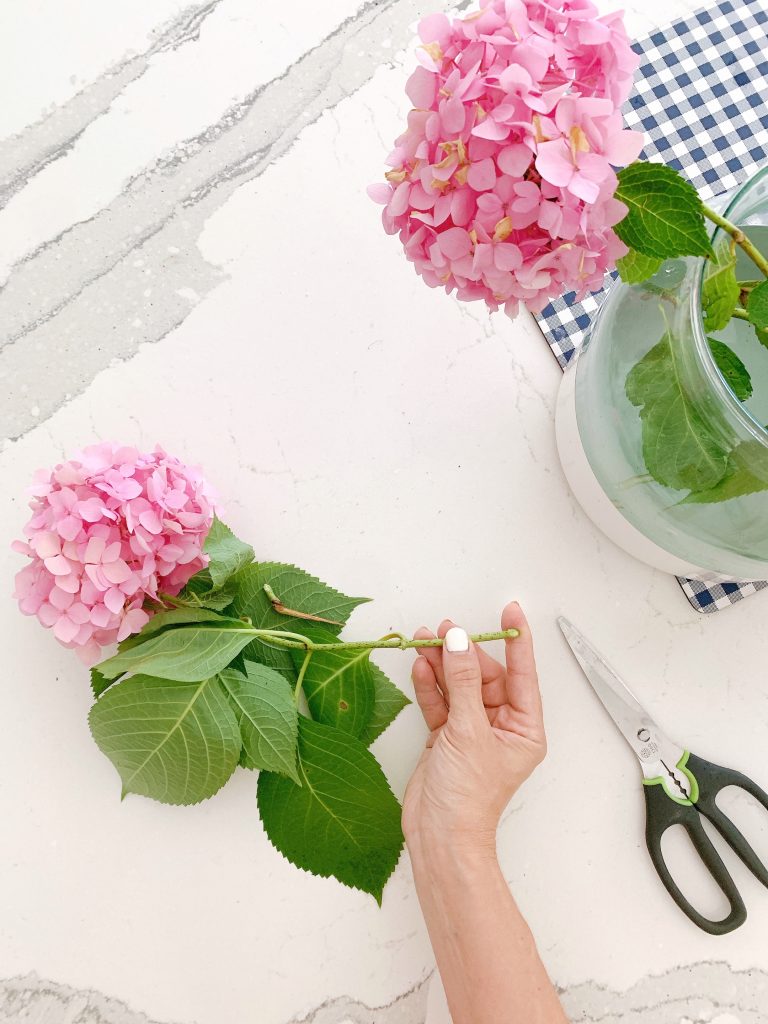To prevent hydrangeas from wilting, ensure they are planted in a well-draining soil and watered regularly. Hydrangeas are prized for their stunning blooms and ability to add a pop of color to any garden or landscape.
However, wilted hydrangeas can be a disappointment. To keep your hydrangeas looking their best, it’s important to take proper care of them and provide the right conditions for their growth. We will discuss simple yet effective ways to prevent hydrangeas from wilting.
By following these tips, you can ensure that your hydrangeas thrive and continue to beautify your outdoor space.

Credit: stacyling.com
How to Prevent Hydrangeas from Wilting: Step by Step Guide
Understanding Hydrangea Wilting
Hydrangeas wilting can be prevented by understanding the factors causing this issue. Identifying wilting symptoms is crucial for prompt action. Preventing wilting is vital for the healthy growth of hydrangeas, as it enhances their overall well-being. By maintaining optimal moisture levels in the soil, hydrangeas can thrive.
Providing adequate shade and protecting them from extreme temperatures can also prevent wilting. Regularly checking for pests or diseases and taking appropriate measures to address them is essential. Proper pruning and regular fertilization contribute to the prevention of wilting as well.
By taking these preventative measures, you can ensure that your hydrangeas flourish and maintain their vibrant, beautiful blooms.
Proper Hydrangea Care Techniques
Hydrangeas are beautiful flowering plants that can add a touch of elegance to any garden. However, they can be prone to wilting if not properly cared for. One important aspect of hydrangea care is providing appropriate watering. These plants need consistent moisture, but overwatering can lead to root rot.
It’s essential to strike a balance and water them when the top inch of soil feels dry. Additionally, ensuring proper lighting conditions is crucial. Hydrangeas thrive in partial shade, so avoid exposing them to excessive sunlight. Maintaining the right soil condition is also essential.
These plants prefer well-draining soil with a slightly acidic pH. Applying fertilizer and nutrients regularly will keep them healthy and vibrant. Pruning and shaping the plant in early spring will promote new growth and maintain an attractive shape. Lastly, protecting hydrangeas from extreme weather conditions, such as frost or extreme heat, is crucial for their survival.
By following these care techniques, you can prevent hydrangeas from wilting and enjoy their beauty for years to come.
Tips And Tricks For Preventing Hydrangea Wilting
Preventing hydrangea wilting can be achieved through careful selection of hydrangea varieties. It is important to choose varieties that are suited for the specific climate and soil conditions in your area. Properly hydrating newly planted hydrangeas is another key factor in preventing wilting.
Ensuring that the plants receive sufficient water, especially during dry periods, is crucial. Using mulch around the base of the plants can help regulate soil moisture and prevent dehydration. Implementing shade and wind protection strategies, such as planting hydrangeas in a location with partial shade or using windbreaks, can also help prevent wilting.
Regular monitoring of the plants for signs of pest and disease infestation is important, as early intervention can prevent wilting caused by these issues. Taking these tips and tricks into consideration will help keep your hydrangeas healthy and thriving.
Frequently Asked Questions Of How To Prevent Hydrangeas From Wilting
How Often Should I Water My Hydrangeas?
To prevent wilting, water your hydrangeas deeply 2-3 times a week, ensuring the soil is consistently moist.
What Is The Best Time Of Day To Water Hydrangeas?
Water hydrangeas in the early morning or late afternoon to prevent evaporation and allow the plants time to absorb moisture before it gets too hot.
How Can I Protect Hydrangeas From Hot Weather?
To shield hydrangeas from extreme heat, provide shade using a patio umbrella or place potted plants in a shaded area.
Can I Use Mulch To Help Prevent Hydrangeas From Wilting?
Yes, mulching around the base of hydrangeas can help retain moisture in the soil and regulate temperature, reducing the risk of wilting.
Conclusion
In summation, keeping your hydrangeas from wilting requires a combination of proactive measures and careful attention to their needs. By ensuring they have the right amount of water, providing adequate sun exposure and shade, and preventing disease and pests, you can ensure the longevity and vibrancy of your hydrangeas.
Regularly pruning and deadheading will also help maintain their health and prevent wilting. Remember to choose the correct hydrangea variety for your climate and environment, as some are more susceptible to wilting than others. Lastly, stay vigilant and observe your plants closely to catch early signs of wilting and address them promptly.
With the tips and strategies discussed you can enjoy healthy, flourishing hydrangeas for years to come. So go ahead, put these guidelines into practice and watch your garden bloom with beautiful, radiant hydrangeas.

